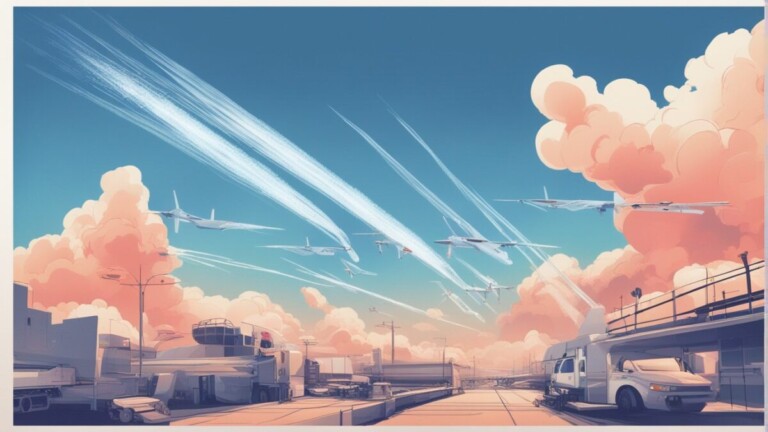The Chemtrails Theory: Unraveling the Trails of Conspiracy
The Chemtrails theory, a controversial and enduring conspiracy, contends that the condensation trails left behind by aircraft, commonly known as contrails, are not innocent water vapor but rather part of a sinister scheme involving the dispersal of chemical or biological agents into the atmosphere. This article delves into the origins of the Chemtrails theory, examines the scientific consensus, explores the psychological factors that fuel its persistence, and sheds light on the implications of conspiracy theories in the age of information.
Origins and Evolution of the Chemtrails Theory
Emergence in the 1990s
The Chemtrails theory first emerged in the 1990s when people began noticing persistent contrails that lingered and spread across the sky. In an era marked by increased awareness of environmental issues and a growing distrust of institutions, the theory found fertile ground.
The Internet and the Spread of the Theory
The rise of the internet facilitated the rapid dissemination of information, both credible and dubious. Online platforms allowed proponents of the Chemtrails theory to connect, share anecdotal evidence, and build a community that challenged the official explanations provided by scientific and aviation experts.
Deconstructing the Chemtrails Narrative
The Science of Contrails
Contrails are a natural byproduct of aircraft engine exhaust interacting with cold and moist air at high altitudes. They consist primarily of water vapor, ice crystals, and trace pollutants. Contrails can persist and spread under specific atmospheric conditions, leading to the appearance of lingering trails that some interpret as evidence of chemical dispersion.
Examining the Evidence
Proponents of the Chemtrails theory often cite photos and videos of unusual contrail patterns as evidence of a secret spraying program. However, these visual observations are often misinterpreted or taken out of context. Rigorous scientific analysis reveals that these observations can be explained by known atmospheric phenomena.
Psychological Factors and the Appeal of Conspiracy Theories
Mistrust of Institutions
The Chemtrails theory thrives in an environment of mistrust toward institutions and governments. Historical events like Watergate and government secrecy have contributed to a climate where conspiracy theories can gain traction.
Cognitive Biases and Pattern Recognition
Human psychology plays a role in accepting conspiracy theories. Our brains naturally seek patterns and explanations, which can lead to connecting unrelated events and seeing hidden meanings where none exist.
Implications of the Chemtrails Theory
Threat to Public Discourse
Conspiracy theories like the Chemtrails theory can erode public discourse by spreading misinformation and undermining informed decision-making. The propagation of unfounded claims can hinder constructive dialogues about real-world challenges.
Promotion of Distrust and Paranoia
The Chemtrails theory fosters a sense of distrust and paranoia, leading to a belief that powerful entities are engaged in secret and harmful activities. This mindset can alienate individuals from mainstream information sources and lead to further polarization.
Navigating the Age of Information
Media Literacy and Critical Thinking
In the digital age, cultivating media literacy and critical thinking skills is essential. The prevalence of conspiracy theories underscores the importance of discerning credible sources from sensationalized narratives.
The Chemtrails theory embodies the intricate interplay between psychology, technological advancement, and societal factors that drive conspiracy theories. While proponents of the theory claim a grand conspiracy, evidence and scientific consensus paint a different picture. The theory serves as a reminder of the need for critical evaluation of information and the role of science in dispelling myths that can shape public perceptions.
